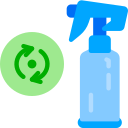What’s Next: Standards, Tech, and Habits
Expect clearer disclosures on test methods, biodegradation timelines, and aquatic safety. Brands that publish full ingredient lists and third-party certifications will stand out. Tell us which labels you trust so we can build a shared, reliable reference list.
What’s Next: Standards, Tech, and Habits
New surfactants and biodegradable chelators are improving hard-water performance without persistent residues. Enzyme blends work at lower temperatures, saving energy. As these advance, the balance between cleaning power and environmental care will keep tipping in our favor.
What’s Next: Standards, Tech, and Habits
Refill stations, concentrated pods, and repairable sprayers are rising. Your habits amplify the impact: measure, ventilate, and store correctly. Subscribe for monthly checklists, share your refill map, and help neighbors make the switch with confidence and clarity.
What’s Next: Standards, Tech, and Habits
Lorem ipsum dolor sit amet, consectetur adipiscing elit. Ut elit tellus, luctus nec ullamcorper mattis, pulvinar dapibus leo.





